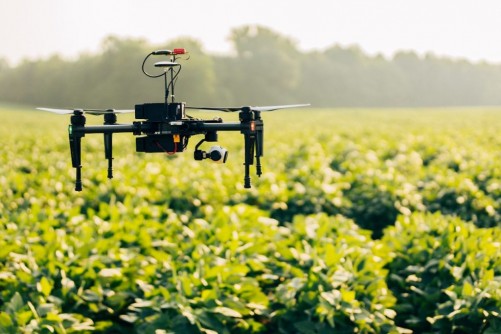Azahar Ali is preparing for what experts predict will be the fourth agricultural revolution.
Ali, a biosensing engineer and assistant professor at Virginia Tech specializing in animal sciences and biological systems engineering, believes this new era will harness the potential of advanced technologies from the Fourth Industrial Revolution. According to him, three specific technologies—wearable agriculture sensors, Internet of Things (IoT)-enabled devices, and artificial intelligence (AI)—have the potential to significantly advance climate-smart, precision agriculture.
In a review article published by Advanced Intelligent Systems, Ali and colleagues Matin Ataei Kachouei from the School of Animal Sciences and Ajeet Kaushik from Florida Polytechnic University discussed the merging of these cutting-edge technologies. They suggested that combining these technologies could bring about a fundamental change in how the agricultural sector monitors food safety, quality, and global plant health and productivity.
Ali stresses the importance of early, accurate monitoring to sustainably and safely feed the rapidly growing global population. He refers to projections estimating that by 2050, the world’s population will reach nearly 10 billion, necessitating a 50 percent increase in food production to maintain the global food supply chain.
According to Ali, researchers across different fields must collaborate to unlock the full potential of these new technologies to meet future demands. He emphasizes the need for agronomists to collaborate with experts in engineering, human and veterinary medicine, and materials science.
“There’s a huge gap in this kind of collaboration,” Ali remarked. “I develop sensors, but I need to collaborate with experts in machine learning. We need to engage in more collaboration to solve the food crisis.”
In their article, Ali, Kachouei, and Kaushik outlined recent advancements in applying sensors, smart devices, and AI in monitoring food and plants. They also detailed the potential and challenges associated with integrating these technologies.
The researchers highlighted significant developments in food sensor technology, focusing on measuring toxins, humidity, pH, freshness, temperature, contaminants, and pathogens. They emphasized that monitoring these factors is critical for ensuring food safety, quality, and maintaining high packaging standards.
Discussing the combination of sensors and smart devices, the researchers suggested that these systems could efficiently collect real-time data at scale. Additionally, they highlighted AI’s role in processing the substantial volume of data generated by these smart systems, potentially enabling predictive analysis to anticipate challenges such as disease outbreaks and weather patterns.
Throughout their article, Ali and his colleagues showcased ongoing research examples that integrate multiple technologies. These examples included the development of electrochemical sensors to detect disease biomarkers in cow milk, orange juice, and apple juice, as well as using microneedle-based integrated plant sensors alongside smartphone-based 3D-printed devices to detect viruses in tomatoes.
Despite the promise of these solutions, Ali and his team acknowledged existing challenges in adopting fourth agricultural revolution technologies. They pointed out concerns related to data security from smart sensor collections, the costs associated with sensor technology and data management, and potential internet connectivity issues in rural farming areas.
To overcome these challenges, Ali emphasized the necessity for collaboration, not just among scientists but also involving policymakers and farmers. “To solve our common problems, we need to work together,” he emphasized.
If our reporting has informed or inspired you, please consider making a donation. Every contribution, no matter the size, empowers us to continue delivering accurate, engaging, and trustworthy science and medical news. Independent journalism requires time, effort, and resources—your support ensures we can keep uncovering the stories that matter most to you.
Join us in making knowledge accessible and impactful. Thank you for standing with us!

